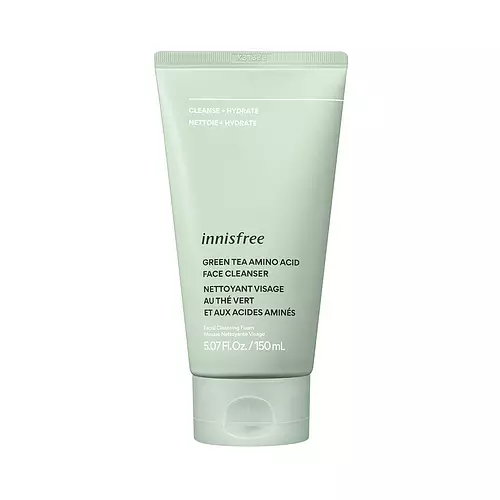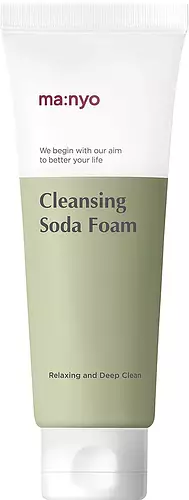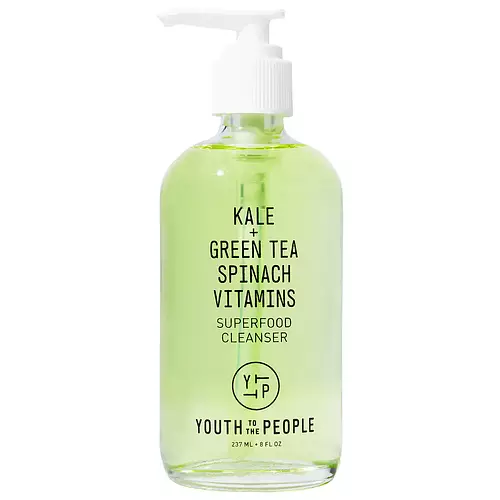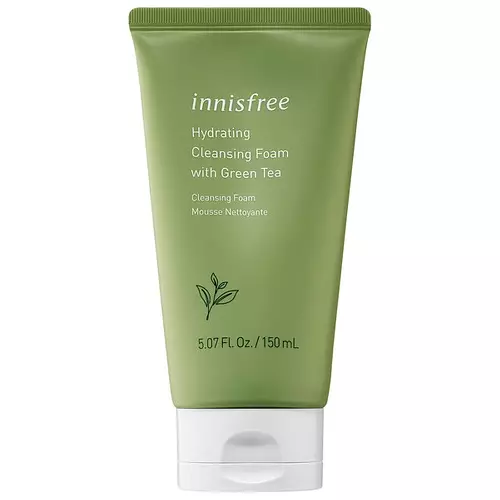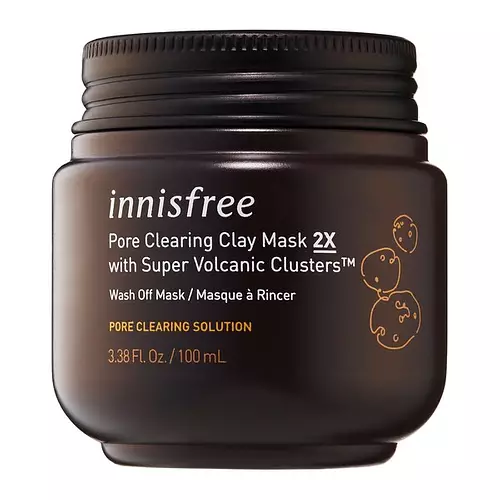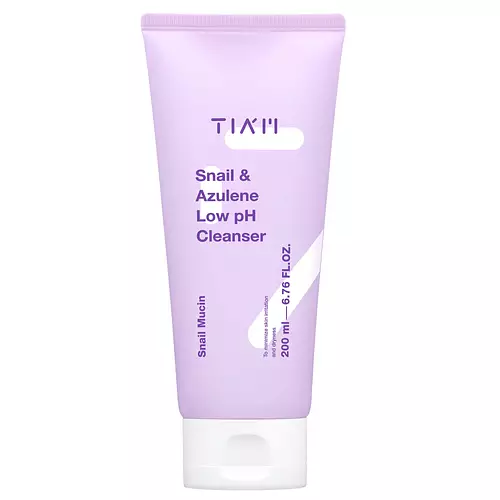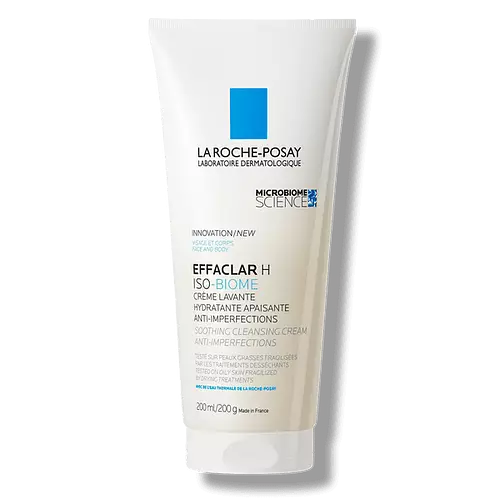Overview
What they are
These products are both reef safe face cleansers. They have a total of 4 ingredients in common
Cool Features
They both contain ceramides
Suited For
They're both likely to be good for fighting acne, anti aging, dry skin, brightening skin, sensitive skin and reducing pores
Free From
They both do not contain any harsh alcohols, common allergens, oils, parabens, silicones or sulfates
We independently verify ingredients, and our claims are backed by peer-reviewed research. Spot a product that needs an update? Let us know.
Ingredient Info
innisfree Green Tea Amino Acid Face Cleanser 32 ingredients
BYOMA Creamy Jelly Cleanser 25 ingredients
At a glance
Click on any of the items below to learn more
innisfree Green Tea Amino Acid Face Cleanser 32 ingredients
BYOMA Creamy Jelly Cleanser 25 ingredients
Benefits
This product contains 1 ingredient that may have this attribute:
This product contains 1 ingredient that may have this attribute:
This product contains 1 ingredient that may have this attribute:
This product contains 1 ingredient that may have this attribute:
This product contains 1 ingredient that may have this attribute:
This product contains 1 ingredient that may have this attribute:
This product contains 2 ingredients that may have this attribute:
Concerns
This product contains 3 ingredients that may have this attribute:
This product contains 2 ingredients that may have this attribute:
This product contains 1 ingredient that may have this attribute:
This product contains 1 ingredient that may have this attribute:
Notable Ingredients
This product contains 1 ingredient that may have this attribute:
This product contains 1 ingredient that may have this attribute:
This product contains 1 ingredient that may have this attribute:
Benefits
This product contains 3 ingredients that may have this attribute:
This product contains 4 ingredients that may have this attribute:
This product contains 3 ingredients that may have this attribute:
This product contains 1 ingredient that may have this attribute:
This product contains 2 ingredients that may have this attribute:
This product contains 3 ingredients that may have this attribute:
This product contains 2 ingredients that may have this attribute:
This product contains 2 ingredients that may have this attribute:
This product contains 1 ingredient that may have this attribute:
This product contains 3 ingredients that may have this attribute:
Concerns
This product contains 1 ingredient that may have this attribute:
This product contains 2 ingredients that may have this attribute:
This product contains 2 ingredients that may have this attribute:
This product contains 1 ingredient that may have this attribute:
This product contains 2 ingredients that may have this attribute:
This product contains 3 ingredients that may have this attribute:
Ingredients Side-by-side
Ingredients Explained
These ingredients are found in both products.
Ingredients higher up in an ingredient list are typically present in a larger amount.
Glycerin is already naturally found in your skin. It helps moisturize and protect your skin.
A study from 2016 found glycerin to be more effective as a humectant than AHAs and hyaluronic acid.
As a humectant, it helps the skin stay hydrated by pulling moisture to your skin. The low molecular weight of glycerin allows it to pull moisture into the deeper layers of your skin.
Hydrated skin improves your skin barrier; Your skin barrier helps protect against irritants and bacteria.
Glycerin has also been found to have antimicrobial and antiviral properties. Due to these properties, glycerin is often used in wound and burn treatments.
In cosmetics, glycerin is usually derived from plants such as soybean or palm. However, it can also be sourced from animals, such as tallow or animal fat.
This ingredient is organic, colorless, odorless, and non-toxic.
Glycerin is the name for this ingredient in American English. British English uses Glycerol/Glycerine.
Learn more about GlycerinStearic Acid is a fatty acid. It is an emollient, emulsifier, and texture enhancer.
As an emollient, stearic acid helps soften skin. It aids the skin's protective barrier by preventing water loss. It also provides a gentle cleansing effect without stripping away natural oils.
Stearic acid may also be used to enhance the texture of products. It can add volume and stabilize ingredients such as water and oil. This can help water and oil ingredients from separating.
Sources of stearic acid include animal or vegetable fats/oils such as coconut or shea. It can be naturally found in butter, cocoa butter, shea butter, vegetable fats, and animal tallow.
This ingredient may not be Malassezia folliculitis, or fungal-acne safe.
Learn more about Stearic AcidCamellia Sinensis Leaf Extract is derived from the leaves of the tea plant. Black tea, green tea, and oolong tea are all harvested from this plant.
This ingredient has many skin benefits:
This ingredient contains polyphenols, a strong antioxidant. Antioxidants help fight off molecules that damage skin cells.
On top of that, the antioxidants in green tea neutralize free-radicals from the sun. This gives the skin some extra UV protection, but should not replace sunscreen.
Many components of tea have anti-inflammatory properties.
Polyphenols and L-theanine help soothe the skin and reduce irritation. The caffeine in Camellia Sinensis Leaf Extract helps calm inflamed blood vessels.
Other compounds found in tea include: Vitamin Bs, linoleic acid, magnesium, calcium, iron, and zinc.
Research has shown both drinking Camellia Sinensis Leaf Tea and applying it to the skin can help boost skin elasticity and hydration. Studies also show using tea extract may reduce sebum, or oil, production.
Learn more about Camellia Sinensis Leaf ExtractCeramide NP is a type of ceramide.
Ceramides are intercellular lipids naturally found in our skin that bonds dead skin cells together to create a barrier. They are known for their ability to hold water and thus are a great ingredient for dry skin.
Ceramides are an important building block for our skin barrier. A stronger barrier helps the skin look more firm and hydrated. By bolstering the skin ceramides act as a barrier against irritating ingredients. This can help with inflammation as well.
If you would like to eat ceramides, sweet potatoes contain a small amount.
Read more about other common types of ceramides here: Ceramide AP Ceramide EOP
Learn more about Ceramide NPIngredient Ratings
Here's what our community thinks of the ingredients in these two products.
When to use
innisfree Green Tea Amino Acid Face Cleanser 32 ingredients
BYOMA Creamy Jelly Cleanser 25 ingredients


Reviews
Here's what our community thinks
innisfree Green Tea Amino Acid Face Cleanser 32 ingredients
Nasia
This cleanser worked great for me. I have combination skin and I recently found out it is more suitable for dry skin. It does work nice though I am...
This cleanser worked great for me. I have combination skin and I recently found out it is more suitable for dry skin. It does work nice though I am going to try one that is best suited for combination skin. That is the only reason I took down a star. My mistake 😅
BYOMA Creamy Jelly Cleanser 25 ingredients
magically.jen
not for oily/acne prone skin
bought this cleanser and moisturizer and after reviewing the ingredients, we also believe the oleic and stearic acid...
not for oily/acne prone skin
bought this cleanser and moisturizer and after reviewing the ingredients, we also believe the oleic and stearic acid (which alot of BYOMA products have) made my boyfriend (sensitive/acne prone/oily skin) have soooo many break outs so we will be replacing these products immediately. I will continue to use the products as I have normal skin so so far so good no major changes.
YousifShamoon
thin ice
i had such high hopes for this brand and cleanser and it did feel nice at first. it's not stripping and gets the job done, but ever since...
thin ice
i had such high hopes for this brand and cleanser and it did feel nice at first. it's not stripping and gets the job done, but ever since i started using this cleanser along with the gel moisturizer from byoma, i started breaking out. i had no issues with their clarifying and brightening serums but i checked my whole routine to see why i am breaking out so much and i think the sodium chloride in this cleanser and the oleic acid in literally almost all of byoma's products are partially responsible for this. it could be something else but i personally won't be repurchasing anything from them just in case it really was their products breaking me out.
